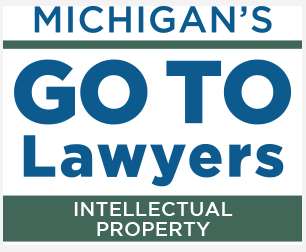Intellectual Property Insights from Fishman Stewart
Mini Article – Volume 23, Issue 4
Share on Social

AI Stands for … Art Infringers?
By Alexander JSW Johnson
Artificial Intelligence tools have been all the rage in recent months. From ChatGPT to Midjourney, these tools take different forms but the premise is the same: a user enters a prompt in text form, and the AI tool creates a response in text-form or image. They do so by learning from existing writings and images and then composing a piece based on all those reference points. They can even write or render in the particular style of a person, genre, period, or other style-defining category.
Last month, a trio of artists filed a class action suit against three AI tool-makers: Stability AI Ltd. (and Stability AI), Inc., Midjourney, Inc., and DeviantArt, Inc. The thrust: these tools create works (text or images) taking the style of or sourcing from copyrighted works without permission.
I’m not here to weigh in on this suit (particularly the class certification angle), but, I do find it interesting and noteworthy that in my undergrad art studies, instructors often encouraged studying the classics and practicing replication of specific pieces down to every detail imaginable as a means of developing skill—but the works I trained on were always public domain pieces. The pieces that these AI tools have drawn on for training their skills and creating their pieces are, at least in some instances, not public domain.
This case draws out some interesting issues for AI-generated artwork. First, do these AI art bots “copy” works such that it is copyright infringement, or is it fair use as inspirational source material? Second, regardless of infringement and fair use, are the works of these AI tools copyrightable works themselves?
Last month I asked for your take on who owns the copyright in user-prompted, AI-generated text. After considering the issue for a different medium—visual works—I’m curious what your view is now.
Who owns the copyright in works generated by AI tools?
Published February 23, 2023


Related Content from Fishman Stewart
In a recent decision, the U.S. Court of Appeal for the Eighth Circuit affirmed a jury verdict holding that the use of the "Success Kid" meme by a congressman's reelection campaign for fundraising purposes did not qualify as fair use.
In February 2024, proposed legislation was introduced in US House of Representatives which would extend copyright protection to golf courses. The bill is titled “Bolstering Intellectual Rights against Digital Infringement Enhancement Act” or the “BIRDIE Act”.
June is Pride Month, which honors the 1969 Stonewall Uprising in Manhattan and recognizes the impact that lesbian, gay, bisexual, and transgender (LGBTQ+) individuals have had on history locally, nationally, and internationally. The United States Patent and Trademark Office flies the Pride Flag and promotes the Pride community’s contributions with programming offered annually.
June is Pride Month. This year we are celebrating with some IP tips for drag performers! Drag performers can protect their intellectual property by registering the copyrights in their original works of music, choreography, and comedy sketches.
You’re rarely more than a few yards from Finny’s favorite chips, semiconductor chips to be precise. But what exactly is a semiconductor chip?
"May the 4th Be With You," also known as Star Wars Day, takes place annually on May 4th. The phrase is a pun on the iconic Star Wars catchphrase "May the Force be with you."
First, a big “thank you” to all our readers who have given feedback on our newsletter. We appreciate your interest and insights. It is always a treat to hear from you! Second, we wanted to provide you with updates on some of our most popular articles
“Palworld”— a computer game created and published by Japanese developer Pocket Pair. Released as an early access game in January 2024, it sold over seven million copies on the computer platform Steam in the first five days and had nearly 20 million players in the first two weeks.
This year’s Super Bowl featured a thrilling overtime victory for the Kansas City Chiefs over the San Francisco 49ers. With estimates as high as 123 million viewers, America's premier sporting event also serves as a grand stage for creativity and intellectual property protections that enhance the game’s success.
Valentine’s Day is just around the corner and jewelry sales are usually around $6 billion USD in the United States alone. In 2021, the US Customs and Border Protection agency seized over $1 billion USD worth of counterfeit pieces of jewelry.
IDENTIFYING, SECURING AND ADVANCING CREATIVITY®












